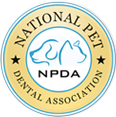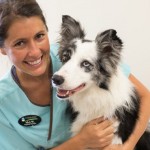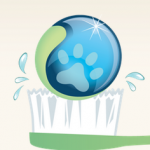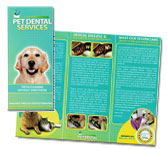“The services provided by Pet Dental Services have proven to be invaluable to our practice. Our clients appreciate the safety and convenience that non-anesthetic dentistry provides to their pets. Pet Dental Service’s staff is incredibly kind and patient with the pets in their care. Even some of our fearful patients are able to benefit from a full dental cleaning due to the gentle care provided by the PDS staff.”
Frequently Asked Questions
Q: How can you effectively perform cleaning on a dog or cat while it is squirming around and under stress?
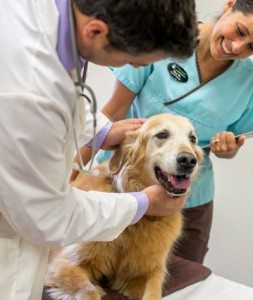 A: We sit at eye-level with the pet and use a variety of proprietary holds to maintain control while keeping our patient calm and comfortable. Pets are never forced or bullied into submission. Most vets are totally amazed at how compliant dogs and cats become during the procedure.
A: We sit at eye-level with the pet and use a variety of proprietary holds to maintain control while keeping our patient calm and comfortable. Pets are never forced or bullied into submission. Most vets are totally amazed at how compliant dogs and cats become during the procedure.
Q: Are you able to do a thorough cleaning both above and below the gum line?
A: Absolutely! Our hygienists are highly skilled hygienists. They know the importance of removing all of the plaque from the outside and inside surfaces of the teeth, both above and below the gum line.
Q: Don’t most pets become frightened and panic when you attempt to use a scaler or a motorized polisher?
A: We treat our patients much like a dentist treats a young child during a first-time dental visit. We use patience in our approach, and slowly introduce each phase of the procedure. As we build trust, almost every dog and cat we treat will allow us to use all of the exact same tools used in traditional veterinary dentistry.
Q: Have you found this technique to be effective with high-risk patients?
A: Yes! Non-anesthetic dental cleanings are usually a much better alternative for older pets, and for pets with chronic kidney, liver or heart disease who might not be a candidate for general anesthesia.
Q: Can a properly trained non-anesthetic dental (NAD) hygienist perform a cleaning on virtually any dog?
A: No. While the vast majority of dogs and cats will benefit greatly from non-anesthetic dental, there are some for whom it is not appropriate. Examples of pets who are poor candidates for non-anesthetic dental include pets with: severe gingivitis, caries, fractured teeth or stomatitis. Our non-anesthetic dental (NAD) hygienists are aware of the limitations of our drug-free technique. Whenever they discover a loose or fractured tooth, gum disease, tumors, epuli, abscess or any other condition that necessitates a doctor’s intervention, they are quick to bring it to the attending vet’s attention. In cases where it is discovered that NAD is not appropriate, pet owners are much more receptive to traditional dental methods because they know they have tried the drug-free approach first.
Q: What does the hygienist do if a patient is completely uncooperative, overly fearful, or demonstrates highly aggressive behavior?
A: A well-trained and experienced non-anesthetic dental (NAD) hygienist can usually tell within a few minutes whether the patient’s temperament will allow for a successful procedure. In some cases, they are able to calm fearful pets enough to allow for a full cleaning. Other times, though, they will determine that the patient’s temperament simply is not conducive to anesthesia-free treatment and they will recommend an alternative treatment approach.

 Dr. Melissa Byers
Lake Forest Animal Clinic
Lake Forest, CA
Dr. Melissa Byers
Lake Forest Animal Clinic
Lake Forest, CA
